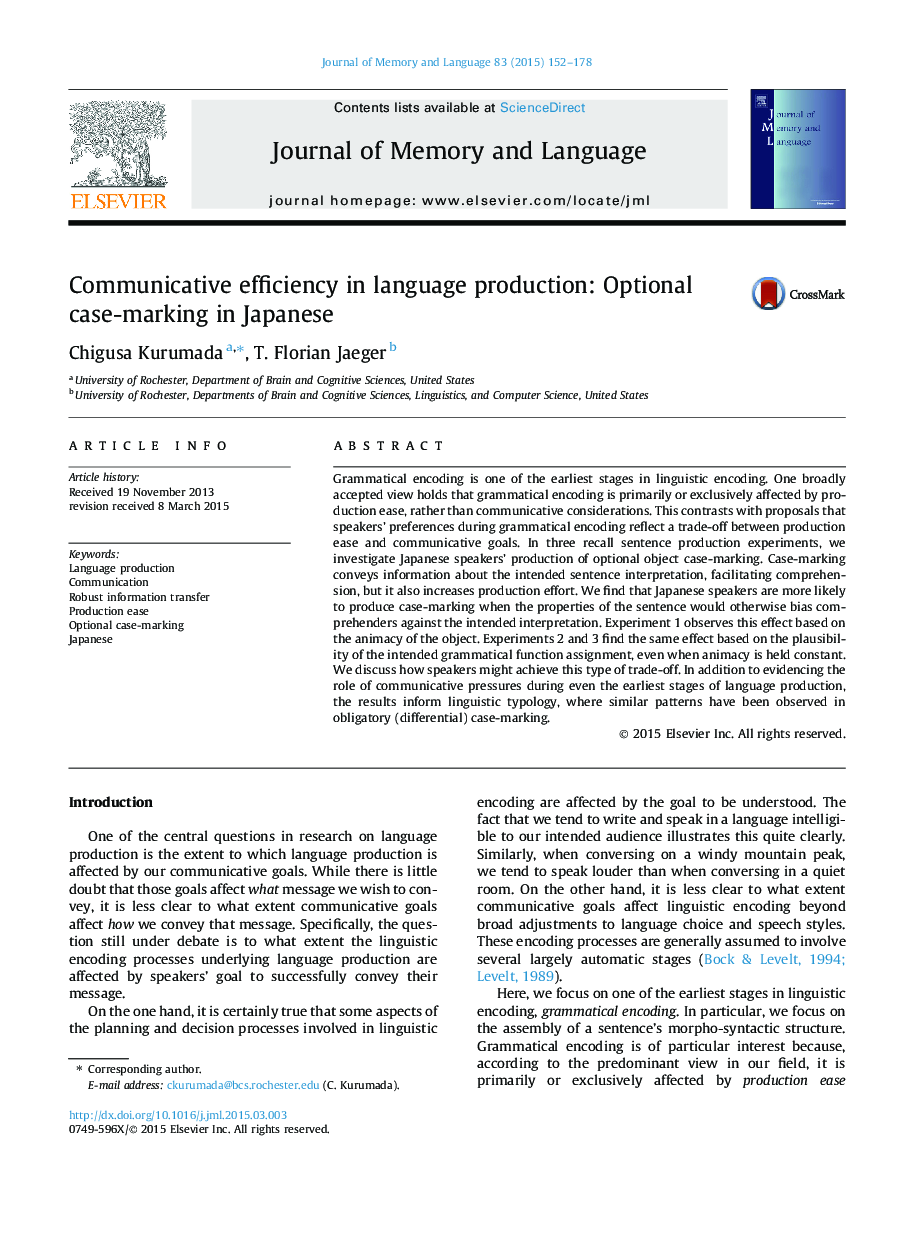| Article ID | Journal | Published Year | Pages | File Type |
|---|---|---|---|---|
| 931792 | Journal of Memory and Language | 2015 | 27 Pages |
•We investigate Japanese speaker’s preferences in optional object case-marking.•Speakers produce case-marking when sentence meaning otherwise difficult to infer.•Object-marking more likely when the object has properties atypical for objects.•Object-marking more likely when sentence’s plausibility of intended sentence low.•Findings argue for preference for robust information transmission during grammatical encoding.
Grammatical encoding is one of the earliest stages in linguistic encoding. One broadly accepted view holds that grammatical encoding is primarily or exclusively affected by production ease, rather than communicative considerations. This contrasts with proposals that speakers’ preferences during grammatical encoding reflect a trade-off between production ease and communicative goals. In three recall sentence production experiments, we investigate Japanese speakers’ production of optional object case-marking. Case-marking conveys information about the intended sentence interpretation, facilitating comprehension, but it also increases production effort. We find that Japanese speakers are more likely to produce case-marking when the properties of the sentence would otherwise bias comprehenders against the intended interpretation. Experiment 1 observes this effect based on the animacy of the object. Experiments 2 and 3 find the same effect based on the plausibility of the intended grammatical function assignment, even when animacy is held constant. We discuss how speakers might achieve this type of trade-off. In addition to evidencing the role of communicative pressures during even the earliest stages of language production, the results inform linguistic typology, where similar patterns have been observed in obligatory (differential) case-marking.
